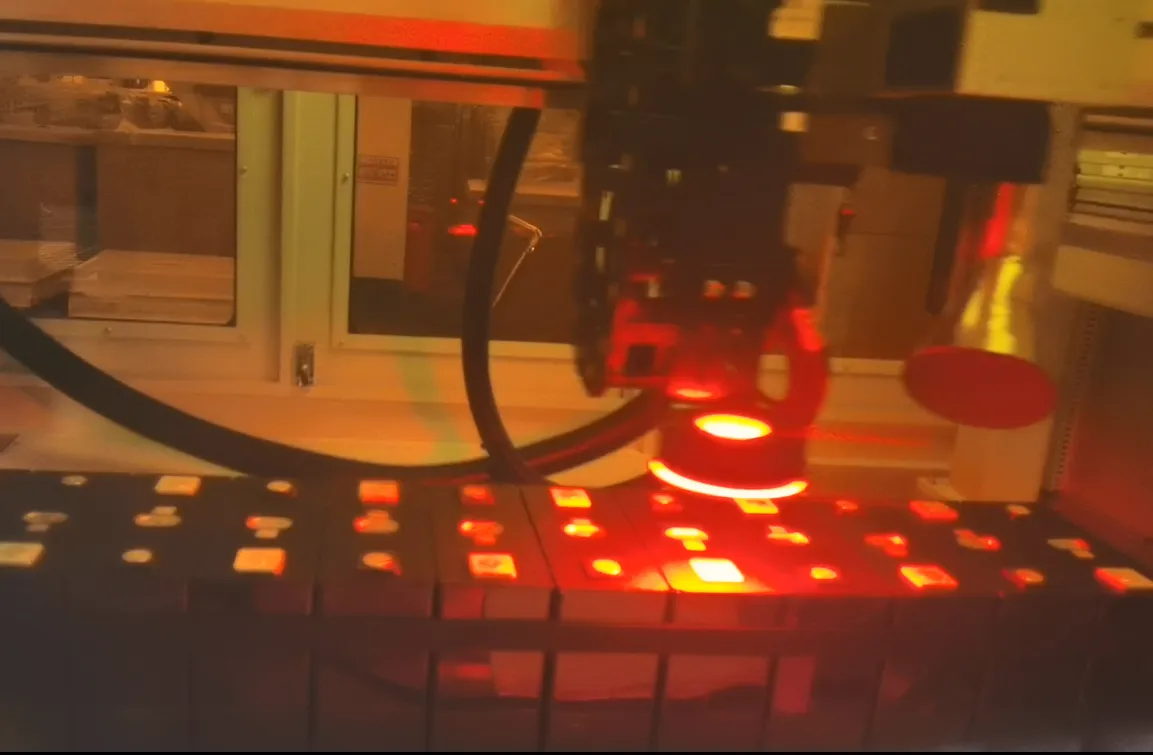In the production of battery modules, particularly for lithium-ion batteries, laser cleaning has emerged as a pivotal technology. This process involves using high-energy laser beams to clean the surface of battery terminals, ensuring optimal performance and reliability. But what exactly is laser cleaning, and why is it essential for battery module production? This article explores these questions and highlights the key benefits of this innovative technique.

What is Laser Cleaning for Battery Terminals?
Laser cleaning is a non-contact cleaning method that utilizes laser pulses to remove unwanted contaminants, such as oxides, dust, grease, and other residues, from the surface of battery terminals (or poles). The process is precise, eco-friendly, and highly efficient, making it an ideal choice for the intricate demands of battery module production.
Key Benefits of Laser Cleaning for Battery Modules
Enhanced Electrical Conductivity: Cleaning the terminals with lasers ensures the removal of insulating contaminants, allowing for improved electrical conductivity and reduced resistance at the contact points.
Improved Welding Quality: For battery modules that require laser welding of terminals, a clean surface is crucial. Laser cleaning ensures that no impurities interfere with the welding process, resulting in stronger and more reliable welds.
Eco-Friendly Process: Unlike traditional chemical cleaning methods, laser cleaning produces no hazardous waste and consumes minimal resources, making it an environmentally friendly solution.
Precision and Consistency: The automated nature of laser cleaning ensures uniform results across all battery terminals, reducing variability and enhancing overall quality.
Cost-Effectiveness: By minimizing waste, reducing cleaning time, and improving the longevity of production equipment, laser cleaning proves to be a cost-effective solution in the long run.
The Role of Laser Cleaning in Battery Module Production
In battery module manufacturing, the cleanliness of terminals is paramount. The terminals serve as critical contact points for electrical flow within the module. Any contamination can lead to increased resistance, overheating, or even failure of the battery. Laser cleaning addresses these challenges by providing a reliable method to maintain terminal integrity.
Moreover, laser cleaning is often integrated into automated production lines, ensuring seamless operation and alignment with Industry 4.0 standards. This integration allows manufacturers to achieve higher throughput while maintaining stringent quality standards.
Applications Beyond Battery Terminals
While laser cleaning is primarily used for terminal preparation, its applications extend to other areas in battery manufacturing, such as cleaning surfaces for Insulation Paper application, preparing housing components, and even refurbishing used battery modules.
Conclusion
Laser cleaning for battery module terminals is a game-changer in modern manufacturing. By enhancing electrical performance, ensuring welding quality, and aligning with sustainability goals, this technology plays an indispensable role in producing high-performance and reliable battery modules. As the demand for lithium-ion batteries grows, so does the importance of adopting advanced cleaning technologies like laser cleaning.
If you’re in the battery manufacturing industry, exploring laser cleaning solutions could be the key to staying ahead in a competitive market.



